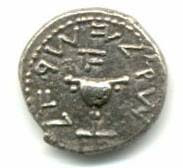The Tarim Basin Mummies, located in China, have already turned a lot of what was thought to be known about Bronze Age Chinese history and cultural transmissions on its head when it turned out that the mummies were not ethnic Chinese but instead Western Eurasians. The mummies have just revealed another interesting revelation.
An examination of their tombs has produced examples of the world's oldest cheese, apparently produced using by the kefir method and dating back to 1650-1450 BC
The Detroit Free Press: Great Gouda! World's oldest cheese found - on mummies
The combination of dry desert air and salty soil prevented decay to an extraordinary degree. The remains and grave goods were freeze-dried, preserving the light-brown hair and strangely non-Asian facial features of the dead along with their felt hats, wool capes and leather boots. Analysis of the plant seeds and animal tissues in the tombs showed the burials date to 1450 to 1650 BC.Some of the bodies had oddly shaped crumbs on their necks and chests. By analyzing the proteins and fats in these clumps, Shevchenko and his colleagues determined that they're definitely cheese, not butter or milk. It's not clear why people were buried with bits of cheese on their bodies, Shevchenko says, though perhaps it was food for the afterlife.
The analysis also showed the mummies' cheese was made by combining milk with a "starter," a mix of bacteria and yeast. This technique is still used today to make kefir, a sour, slightly effervescent dairy beverage, and kefir cheese, similar to cottage cheese.
The Tarim Mummies continue to provide interesting revelations about trade, innovation and migration in the ancient world.

1 comment:
well, I always take a little string cheese along on a long journey
Post a Comment